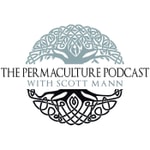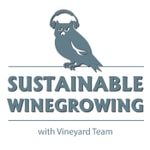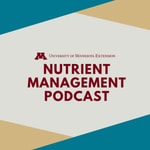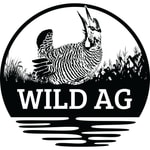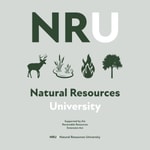Growing Pulse Crops – Détails, épisodes et analyse
Détails du podcast
Informations techniques et générales issues du flux RSS du podcast.
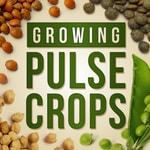
Growing Pulse Crops
Pulse Crops Working Group
Fréquence : 1 épisode/22j. Total Éps: 89

Classements récents
Dernières positions dans les classements Apple Podcasts et Spotify.
Apple Podcasts
🇨🇦 Canada - lifeSciences
03/08/2025#64🇨🇦 Canada - lifeSciences
02/08/2025#48🇨🇦 Canada - lifeSciences
01/08/2025#32🇨🇦 Canada - lifeSciences
31/07/2025#21🇨🇦 Canada - lifeSciences
29/07/2025#96🇨🇦 Canada - lifeSciences
28/07/2025#82🇨🇦 Canada - lifeSciences
27/07/2025#75🇨🇦 Canada - lifeSciences
26/07/2025#69🇨🇦 Canada - lifeSciences
25/07/2025#59🇨🇦 Canada - lifeSciences
24/07/2025#55
Spotify
Aucun classement récent disponible
Liens partagés entre épisodes et podcasts
Liens présents dans les descriptions d'épisodes et autres podcasts les utilisant également.
See all- http://www.futureofag.com/
138 partages
- https://www.growingpulsecrops.com/
67 partages
- http://www.futureofag.com
35 partages
- https://www.linkedin.com/in/timhammerich/
174 partages
Qualité et score du flux RSS
Évaluation technique de la qualité et de la structure du flux RSS.
See allScore global : 89%
Historique des publications
Répartition mensuelle des publications d'épisodes au fil des années.
Fertility for Yield and Nitrogen Fixation With Clain Jones, Ph.D.
Saison 5 · Épisode 14
jeudi 29 août 2024 • Durée 35:14
Dr. Clain Jones is Montana State University Extension’s soil fertility specialist. In this role he covers anything that has to do with fertilizer or nutrient cycling in both agriculture as well as home/garden systems. He started at MSU as a tenure track faculty member in 2006, and has ended up doing quite a bit of work with pulse crops over the years. He joins me today to talk about fertility in pulses, the importance of inoculation, nitrogen credits, soil pH, and the overall importance of pulse crops to soil health.
“Adding five pounds of sulfur per acre to lentils, what we found at least here in Bozeman, was that nitrogen fixation increased at a much faster rate than yield did. What that told us was that by applying sulfur, maybe we're not going to see a huge yield response, but we're going to contribute a lot more nitrogen both to that crop and to the next crop.” - Dr. Clain Jones
Dr. Jones stresses the importance of plant nutrition and pH when it comes to optimizing a pulse crop's ability to fix nitrogen. Limestone deposits in the soil can make pH values highly variable even within a field. This can make accurate soil testing a challenge. An acidic pH has a significant impact on rhizobia viability as they don’t tolerate low pH values very well. Along with pH, many micronutrients such as sulfur, potassium and phosphorus also need to be considered when assessing overall soil health and nitrogen fixation efficiency.
“We have low phosphorus because our high levels of calcium tie up that phosphorus making it less available to crops. Knowing that phosphorus is essential for nitrogen fixation, my gut feel is that phosphorus is probably the nutrient most limiting nitrogen fixation and probably pulse crop growth in our two state region.” - Dr. Clain Jones
This Week on Growing Pulse Crops:
- Meet Dr. Clain Jones, the Montana State University Extension’s soil fertility specialist
- Discover the impact of pH and micronutrients on a pulse crop’s ability to fix nitrogen
- Explore the recommended testing and values of soil nutrition to allow for optimal nitrogen fixation
Growing Pulse Crops is produced by Dr. Audrey Kalil and hosted by Tim Hammerich of the Future of Agriculture Podcast.
Adding Pulse Crops Into Diverse Rotations With Kim Saueressig
Saison 5 · Épisode 13
vendredi 16 août 2024 • Durée 26:36
Kim Sauressig is a fourth generation farmer in Central North Dakota where he grows a wide range of crops including corn, wheat, durum, barley, soybeans, lentils, chickpeas and pinto beans. He also raised cattle until a few years ago when they decided to focus exclusively on crops. When not farming, Kim chairs the North Dakota Dry Pea & Lentil Council and has a seat on the USA Dry Pea & Lentil Council where he serves as the chair of the research committee. Kim shares his journey into pulse crops, what roles they play in his overall rotations, the value of associations like the USA Dry Pea & Lentil Council, and why he believes more farmers should consider including pulse crops in their crop rotations.
“So we started seeding pintos and we were putting a little bit of “N” down. My agronomist called me and he got our soil test back from the laboratory and he is like, just drop your fertilizer. He said, “You don't have to put anything down.” And I truthfully, honestly think that that's because the lentils from the two years previous had fixated it in there. We didn't need it anymore.” - Kim Sauressig
Kim highlights the many benefits of pulse crops that he has experienced including their nitrogen fixation capabilities and their efficiency with water use. Through his work on the North Dakota Dry Pea and Lentil Council and the USA Dry Pea and Lentil Council he has expanded his personal network to include many agronomists and research scientists that have really helped him not only fine tune his operation but also support future pulse crop growers. He goes on to share the many advantages the councils offers producers by way of research and financial support.
“Your revenue protections and your crop insurances and stuff, that's kind of directly put together by the US Dry Pea and Lentil Council….They were a dog in the fight that helped get dollars to come back into the specialty crop side of things. I mean we're talking millions and millions of dollars that went back to producers that were growing pulse crops that were very, very beneficial.” - Kim Sauressig
This Week on Growing Pulse Crops:
- Meet Kim Sauressig, a fourth generation farmer in Central North Dakota, chair of the North Dakota Dry Pea & Lentil Council and chair of the research committee on the USA Dry Pea & Lentil Council
- Discover Kim’s experiences with pulse crops and the insights he has gained from participating in both the North Dakota Dry Pea and Lentil Council and the USA Dry Pea and Lentil Council
Growing Pulse Crops is produced by Dr. Audrey Kalil and hosted by Tim Hammerich of the Future of Agriculture Podcast.
Nitrogen Fixation and Field Pea Production in South Dakota with Dr. Christopher Graham
Saison 5 · Épisode 4
mardi 19 mars 2024 • Durée 26:04
Dr. Chris Graham is an associate professor at South Dakota State University. He’s also the manager of the West River Research Farm near Sturgis, South Dakota. At that facility they focus a lot on regenerative agriculture, including doing a lot of work with peas and other pulses to extend crop rotations in that semi-arid region in the western part of the state. Graham shares about pulse production in South Dakota, focusing mostly on field peas. He also shares some of the complexities of nitrogen fixation, including what it might look like to have farm-specific microbial inoculant mixes in the future.
“When you look at the growth of wheat, generally the yield is set first and then the protein is made later in its life cycle. And so we often see peas, obviously they're harvested and they start to decay, and that slow decay releases nitrogen later in the wheat growing season. And so we often see a protein bump with wheat following peas.” - Dr. Chris Graham
While there isn’t a lot of acreage in pulses in South Dakota yet, Graham calls field peas the “nickel slots” of the pulses. In other words, a great place to start incorporating them into a rotation with a low barrier to entry. He highlights that your soil nitrogen content will likely not increase but your input needs may decrease when pulses are used.
“It's still nitrogen that you didn't have to apply and it's also nitrogen that the plant did not necessarily take up from the soil. And so it's conserving some of that nitrogen that's being made available just on that baseline level. ” - Dr. Chris Graham
This Week on Growing Pulse Crops:
- Meet Dr. Chris Graham, an associate professor at South Dakota State University and the manager of the West River Research Farm near Sturgis, South Dakota
- Explore the potential use of pulse crops in rotations in South Dakota
- Discover the niche pulses can fill in rotation as a broadleaf crop capable of nitrogen fixation
Visit Dr. Graham’s webpage here.
Growing Pulse Crops is produced by Dr. Audrey Kalil and hosted by Tim Hammerich of the Future of Agriculture Podcast.
Weed Seed Destruction Technology with Dr. Breanne Tidemann
Saison 5 · Épisode 3
mardi 5 mars 2024 • Durée 34:40
Dr. Breanne Tidemann is a research scientist with Agriculture and Agri-Food Canada based in Lacombe, Alberta. As a weed scientist, her job is to explore new and novel ways to manage weeds. Her focus is to research applied management strategies, weed biology and ecology, and screening for herbicide resistance. In this episode, Tidemann discusses the work she has been leading in Canada on the effectiveness of weed seed destruction technology including the use of mills and shares that this approach can be a very helpful tool in the toolbox especially in pulses.
“By and large, on the vast majority of weed species that have been tested in Canada and the United States, we're seeing greater than 95% control of what goes into those mills…There's the odd one here or there that's a little bit lower, but when I say it's a little bit lower, we're typically still talking greater than 80% control.” - Dr. Breanne Tidemann
Tideman shares the concern that at the end of the season the remaining weeds have managed to survive everything the farmer has put them through. They are therefore the fittest weeds that are the most difficult to get rid of. She proposes that rather than spreading those weed seeds all over the field with a combine we need to focus on destroying them. This process may not solve any weed problems for the crop you're harvesting, but it does start the weed management for the next year early and can have real impacts on future production.
“So there's six main methods of harvest weed seed control. Some of them are things we would consider using in North America, like the weed seed destruction technology.…it's basically trying to turn the combine from a weed seed spreader into a weed seed predator” - Dr. Breanne Tidemann
This Week on Growing Pulse Crops:
- Meet Dr. Breanne Tidemann a research scientist with Agriculture and Agri-Food Canada based in Lacombe, Alberta
- Explore the value and purpose of research regarding harvest weed seed control especially as it relates to crops with limited herbicide options such as pulse crops
- Discover current methods and equipment that are effective for harvest weed seed control and are available in North America
Connect with Dr. Tidemann on Twitter @breannetidemann or visit her website here.
Growing Pulse Crops is produced by Dr. Audrey Kalil and hosted by Tim Hammerich of the Future of Agriculture Podcast.
Bringing Pulse Crop Growers Together With Sam Arnson and Shannon Berndt of the Northern Pulse Growers Association
Saison 5 · Épisode 2
mardi 20 février 2024 • Durée 26:32
Farmer and Northern Pulse Growers Association president Sam Arnson and executive director Shannon Berndt join us to talk about their work at NPGA, the importance of bringing the industry together to fund research, marketing and education efforts, and how other pulse growers can get involved. They share what NPGA has accomplished and what the future holds for northern pulse growers in the region.
“This is an exciting time to be part of this industry because we are still a fairly small industry, but we're growing. We're seeing a lot of additional states coming on board with acreage and production that face some of the same challenges that North Dakota and Montana producers face. And so as a collective group of growers, I think it's important that y'all have a voice.” - Shannon Berndt
The Northern Pulse Growers Association is a nonprofit association representing dry pea, lentil, chickpea, lupin and fava bean growers from Montana and North Dakota. Shannon Berndt has been serving as the assocation's executive director since 2007. When not acting as president for NPGA Sam is found farming northwest of Williston, North Dakota.
“People are overall excited next year for pulses to be put into their rotation if their rotation allows it. And I mean by that is their crop rotation and or chemical herbicide usage if it's opened for pulses. I think a lot of acres are gonna go in next year.” - Sam Arnson
This Week on Growing Pulse Crops:
- Meet farmer and Northern Pulse Growers Association president Sam Arnson and executive director Shannon Berndt
- Explore the progress in development and collaboration between producers the organization has accomplished for pulse growers in the northern region
- Discover what future opportunities the NPGA feels pulse growers have available to them as the industry grows and expands
Growing Pulse Crops is produced by Dr. Audrey Kalil and hosted by Tim Hammerich of the Future of Agriculture Podcast.
Sweet Lupins with Dr. Mike Ostlie
Saison 5 · Épisode 1
mardi 6 février 2024 • Durée 30:36
In this episode we’re looking at a new pulse crop: sweet white lupins. Dr. Mike Ostlie is the director of the Carrington Research Extension Center at North Dakota State University. In the early 2000s a private company that was developing lupin varieties had gone out of business and the germplasm was given to NDSU to work on varieties. Now they’re close to releasing new varieties and Ostlie joins us to share why this is exciting for growers and for the pulse crops industry in general.
“It's actually really an exciting time to be in the lupin world right now because there's a lot of interest in it I think all around in people looking for some new food ingredients, for instance, on the buyer side. As well as some farmers that are interested in getting something a little bit different in their crop rotation.” - Dr. Mike Ostlie
While these varieties of sweet white lupins will be new to many US growers, there is also an initiative in Canada to develop and release blue lupins which have a lot of the same qualities. These qualities include being a strong nitrogen fixer, a phosphorous scavenger, and a high protein legume. Ostlie noted that there is some existing production of sweet lupin in Australia that mainly goes to the pet food and livestock feed industries there.
“The lupins have pretty wide adaptability in the northern plains in the fact that they produce reasonable yield under those very large drought conditions. When they're provided water, the yield potential is quite high….We've seen yields get up to 60 to 70 bushels an acre with lupins, which again, is very competitive with a lot of crops in the area.” - Dr. Mike Ostlie
This Week on Growing Pulse Crops:
- Dr. Mike Ostlie shares the development and potential of white lupins where varieties are being developed at the Carrington Research Extension Center at NDSU
- Discover the yield potential and resilience of the Lupin plant that is also known for its ability to scavenge phosphorus and fix nitrogen
- Learn the unique characteristics and input needs for this up and coming pulse crop
Growing Pulse Crops is produced by Dr. Audrey Kalil and hosted by Tim Hammerich of the Future of Agriculture Podcast.
The Diverse Opportunities in Pulse Crops with Steve Tucker and Dr. Bob Harveson
Saison 4 · Épisode 14
mercredi 4 octobre 2023 • Durée 29:13
Take our audience survey and let us know your feedback about the Growing Pulse Crop Podcast!
Whether you’re from Nebraska or elsewhere, this is a great episode about what’s possible for the future of pulse crops. We talk about peas and chickpeas, but we also get into other niche opportunities like mung beans, cowpeas and more. You’ll get a sense of the emerging pulse industry in Nebraska, but also what it takes for the development of pulse crops everywhere. We discuss genetics, agronomy, disease management and marketing strategy. We start with Steve Tucker. Steve farms near Venango, Nebraska in the southwest part of the state. He has built his operation on the principle of diversity and grows up to 14 different crops.
“We can grow mung beans, I mean, there's different...aspects of these different things that we can do. What does the market need? And so I just had a conversation with a company that's looking for lupins. I don't know if you've ever heard of lupins before and so there are more various different kinds of pulse crops that who knows what else is out there and what people are looking for to utilize in food products.” - Steve Tucker
When plant pathologist Dr. Bob Harveson came to the University of Nebraska in 1999, chickpeas were really on the rise in the state. Sometime in the early 2000’s ascochyta really started to affect a lot of fields and there were no fungicides labeled for the disease for treatment. Since then he said fungicide options have improved over time as have genetics. Unfortunately, many of those same growers who experienced the devastating losses from ascochyta are very hesitant to plant chickpeas or even other pulse crops again. Despite these frustrations, Bob remains optimistic for the future of chickpeas and other pulses in the state.
“I have a strong diagnostic background. So whenever something like this pops up, I try to determine what the problem is, how well it's distributed, you know, those sorts of things. Before you can start developing control measures, you gotta know what you've got in order to really make the right choice for that.” - Dr. Bob Harveson
This Week on Growing Pulse Crops:
- Meet Steve Tucker who farms near Venango, Nebraska and explore the diverse crop varieties he plants on his operation and his motivation behind their selection
- Also meet plant pathologist Dr. Bob Harveson from the University of Nebraska and explore his involvement in pulse crop production and what he sees as the future of the industry
- For more information on ascochyta specifically, you can refer back to some of the previous episodes we’ve done on the topic.
- Coordinated Research Efforts to Fight Pulse Pathogens with Dr. Jenny Davidson in season two
- Canadian Pulses and Foliar Disease Management in season two
- Disease Management in Pulses with Dr. Michael Wunsch in season one
Growing Pulse Crops Podcast is hosted by Tim Hammerich of the
Harvest Considerations with Montana Farmer Terry Angvick
Saison 4 · Épisode 13
lundi 18 septembre 2023 • Durée 28:20
Take our audience survey and let us know your feedback about the Growing Pulse Crop Podcast!
Terry Angvick farms in Sheridan County, Montana which is in the extreme Northeastern corner of the state. He was born, raised there and came back after earning a plant and soil science degree from Montana State University. In his first career, he spent 31 years as the Sheridan County Extension Agent, a position he retired from in 2010. Today he farms mostly durum and dry peas alongside his two older brothers and his son. Terry shares about the important role pulse crops play in rotations in his arid part of the country, some of his management practices that he’s adopted over the past 20 years of growing pulses, and some harvest and post-harvest considerations.
“I think the more residue out there, it prevents erosion, but it also creates a little microclimate, a little environment, for them to grow up into. I prefer a furrow drill…because I think it also allows that little microclimate when you grow up on the stubble. These varieties have tendrils that tie them together, and so that helps to hold them upright as well. In my mind, the more stubble the better.” - Terry Angvick
As an extension agent Terry found himself “searching for something that would justify the economics of farming.” This led him to encourage the planting of previously fallow fields and pursuing different types of crop rotations such as pulse crops.
“When you produce a durum crop following a pulse crop, you almost always have increased yield and quality as opposed to continuous wheat. For example, better protein, better color. Durum has HVAC, which is a hard vitreous amber color, which is a nice yellow color. It's almost always better. So from those standpoints, I guess the pulse crops have really fitted very well and the markets have followed it as well.” - Terry Angvick
This Week on Growing Pulse Crops:
- Meet Terry Angvick from Sheridan County, Montana who farms durum and dry peas alongside his two older brothers and son.
- Explore the new practices Terry has started to compliment the pulse crops he has added to his rotation
Growing Pulse Crops Podcast is hosted by Tim Hammerich of the Future of Agriculture Podcast.
Winter Peas with Dr. Steve Van Vleet
Saison 4 · Épisode 12
mardi 29 août 2023 • Durée 30:06
Take our audience survey and let us know your feedback about the Growing Pulse Crop Podcast!
Dr. Steve Van Vleet spent about 18 years as a regional extension specialist for Washington State University, and today is a research agronomist with The McGregor Company. For most of his career, pulses have been an important part of his work, and he joins us to talk about his excitement for the potential of winter peas. We’re not talking about Austrian Winter Peas, which are feed grade peas that are smaller in size and darker in color. We’re talking about food grade winter peas, which have been available for several years in certain growing areas. Steve says the differences are larger size of at least 17 grams, a clear seed coat, and a green or yellow cotyledon.
“Multiple years, my average yield of my winter peas was 6,000 pounds. That's between all the varieties. Spring pea will range from 2,500 pounds up to 4,500 pounds. But I can get 7,000 or 7,500 pounds off some of the different winter pea varieties. That's the part that makes me super excited..” - Dr. Steve Van Vleet
Steve talks about why he believes this crop is a great option for a lot more growers than are using them currently and some considerations for growing winter peas including seeding depths and timing and pest and disease management. The limiting factor he sees playing a big role in this variety’s success is the access producers have to markets.
“Not are you only helping the soil, helping another crop that you're producing, which makes it better, makes it healthier. But what are you doing when it comes to human health?... If we could market this and people would become educated and say, this is one of the most healthy crops that we can produce and improves human health, soil health, crop health, other crop health. Not just as a rotational crop, but this could be a major crop. That's where I see opportunity.” - Dr. Steve Van Vleet
This Week on Growing Pulse Crops:
- Meet Dr. Steve Van Vleet a former regional extension specialist for Washington State University and current research agronomist with The McGregor Company.
- Explore the benefits of the winter pea variety and the potential it offers producers
- Read more about “Pea Weevil Management in Winter Peas” in this Washington State University publication
Growing Pulse Crops Podcast is hosted by Tim Hammerich of the Future of Agriculture Podcast.
Pulse Flours and Ingredients with Eric Bartsch of AGT Foods
Saison 4 · Épisode 11
lundi 7 août 2023 • Durée 28:40
Eric Bartsch is the division head for global food ingredients at AGT Foods based in Bismarck, North Dakota. He’s been with the company for 16 years and through that time they have grown from just a couple factories to now over 45 facilities and $2B in sales. Processing peas, lentils, chickpeas, fava beans and dry edible beans has been their primary focus since they were founded in 2002. While they have ventured into some grain-based products since that time, they still remain focused and bullish on the future of pulse crops.
“There's a lot of things that we've had to establish. Protein checking in peas was non-existent 20 years ago. And now it's where we're checking protein on every load to be able to supply some of the high end markets that we are today. You know a lot of major investments in protein manufacturing plants, in processing, in food manufacturing plants that are incorporating pulses is really at an all time high and continues to grow.” - Eric Bartsch
Eric discusses how much has changed in pulses to make them more attractive to a wider variety of consumers who want tasty and nutritious foods. This has had big impacts on what buyers are looking for from these pulse crops in terms of flavor and functionality. He talks about how that information gets passed from the consumer to the producer and back, and the role AGT Foods plays in facilitating that connection. He also talks about some of the opportunities ahead for the industry, and why he is more optimistic than ever about the market potential for these crops.
“That's really one of the initiatives we took when we built our Minot plant, is how do we transform pulses into ingredients that can be incorporated into everyday food. So now you look at the market and there's all kinds of gluten-free pasta made from lentils, chickpeas, and peas. They’ve become mainstream where it's become a very large market…So there's many ways to where we've taken pulses, transformed them into an ingredient and incorporated them into everyday foods that consumers are familiar with” - Eric Bartsch
This Week on Growing Pulse Crops:
- Meet Eric Bartsch, the division head for global food ingredients at AGT Foods based in Bismarck, North Dakota
- Explore the future of the pulse crop industry from the perspective of a pulse crop processor
Growing Pulse Crops Podcast is hosted by Tim Hammerich of the Future of Agriculture Podcast.
